Don’t Burn Up Your 50-Amp Neutral (Update)
In response to my article about why 30-amp neutrals burn up. Neutral overload on a 50-amp outlet is caused by incorrect pedestal wiring (April 2023)
Everyone,
My recent article on 30-amp shore power plug neutral contacts burning up caused a bit of confusion with 50-amp shore power. Read it HERE.
While I don’t know why the 30-amp neutral contact would burn up more than the hot contact in a single-pole hookup, I do know exactly why the 50-amp neutral conductor and contacts burn up in a 2-pole hookup.
Comments from “Why do 30-amp neutrals burn up.
Note that this has nothing to do with 30-amp single-pole shore power, but is accurate for 2-pole 50-amp shore power. That’s because the 2-pole 50-amp neutral current does add and subtract exactly as described, but not single-pole 30-amp shore power.
Another one….
This comment is 100% accurate for 50-amp 120/240-volt shore power, but not 30-amp 120-volt shore power.
Read my previous article below
How to avoid burning up the neutral on your 50-amp shore power plug…
Here’s a picture of a burned up neutral on a 50-amp plug. And I know why this usually happens….. A miswired pedestal can burn up your 50-amp shore power plug and damage your RV’s internal wiring. Here’s how to measure a pedestal to avoid it.
Set your meter properly before you measure…
If you’re going to be measuring voltages with a digital meter, you’ll want to set it to the 400- or 600-volt AC scale BEFORE plugging the probes into any outlet.
You’ll see there’s a red probe and a black probe on the meter, but for AC (Alternating Current) it doesn’t matter which color probe goes in which contact on the outlet. However, that’s not the case for 12-volt DC measurements, which do indeed have a polarity. More on that in a future article. Make sure your black meter probe is plugged into the COM (Common) jack on the meter, and the red probe is plugged into the Volt/Ohm?mA jack.
You’ll also see in this diagram that the 50-amp outlet should measure either a nominal 240 volts or 208 volts from Hot-1 to Hot-2, but it must never measure 0 volts between the hot legs.
If you measure 120-volts from neutral to each hot-leg, and 0 volts from hot-1 to how-2, that would indicate that the campground had miswired the outlet with a single leg of 120-volt power jumpered between Hot-1 and Hot-2 on the 50-amp outlet.
How does a 2-pole hookup work on a 50-amp pedestal?
In order for a 50-amp outlet to work properly the two hot legs must be connected to a split-phase service with the two legs 180 degrees out of phase. This allows the neutral current to be subtractive rather than additive. In a properly wired 50-amp outlet, if Leg-1 is carrying 40 amps of current and Leg-2 is carrying 30 amps of current, then the neutral is only returning 10 amps of current. That’s exactly how a split-phase service works in your house.
What happens with a single-pole 50-amp connection?
If the campground cheats and uses a singe-pole service on a 2-pole 50-amp pedestal, bad things can happen. That because the neutral current would be additive rather than subtractive. So 40-amps on Leg 1 and 30-amps on Leg 2 would cause 70 amps of current on the neutral. So you could overload the neutral contacts and conductors in your shore power cord without ever tripping the 50-amp, 2-pole breaker on the pedestal. So a mis-wired single-pole 50-amp pedestal would allow 70, 80 or 90+ amperes of current to flow through your neutral wiring, melting your shore power plug and possibly destroying the wiring in your generator transfer switch.
Your EMS Surge Protector won’t test for this
Never plug your 50-amp shore power cord into a pedestal outlet that measures 0-volts between hot-1 and hot-2 since that will allow you to burn up your neutral under moderate loads. And there’s no EMS/Advanced Surge Protector that measures for this. However, I do know that the 50-amp advanced surge protector from Southwire does measure the neutral current and will shut down power if it exceeds a threshold, which I believe is 70 amps or so.
Why is 208 volts between the two hot-legs acceptable?
The reason that it could read 240 or 208 volts between the two hot legs is that since 2017 the National Electrical Code (NEC) has allowed 3-phase 120/208-volt WYE power to be distributed in campgrounds. That’s perfectly safe if the electricians wiring the pedestals understand 3-phase power, but it’s possible to accidentally create some pretty serious wiring errors with 3-phase service panels that could result in massive RV electrical system damages. So that’s a topic for my advanced RV technician classes.
Quick reference
Finally, here’s a pedestal voltage diagram that you can print out and keep for reference. After 50+ years of doing electrical work I have all of these diagrams in my head (and possibly my DNA), but you’ll want to refer to this diagram until you have it committed to memory. After that, it’s smooth sailing – or smooth RVing – as the case may be….
Let’s play safe out there…. Mike






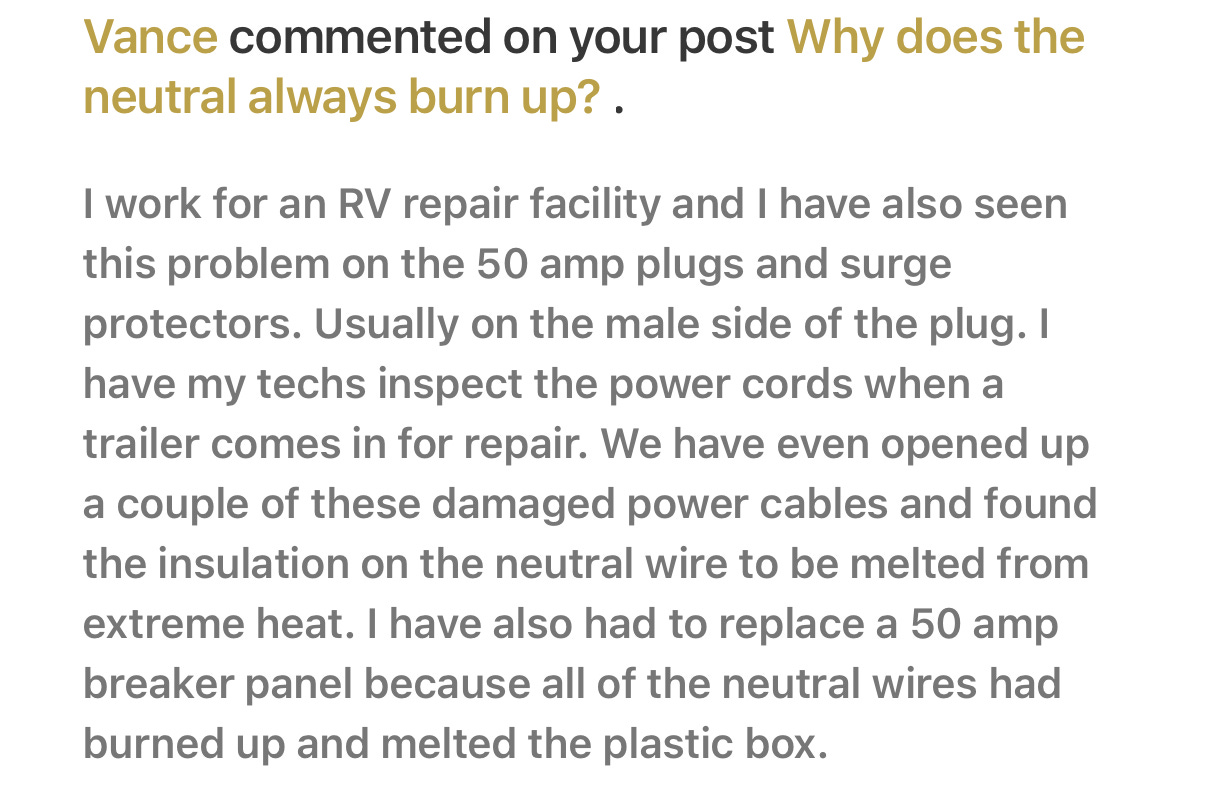

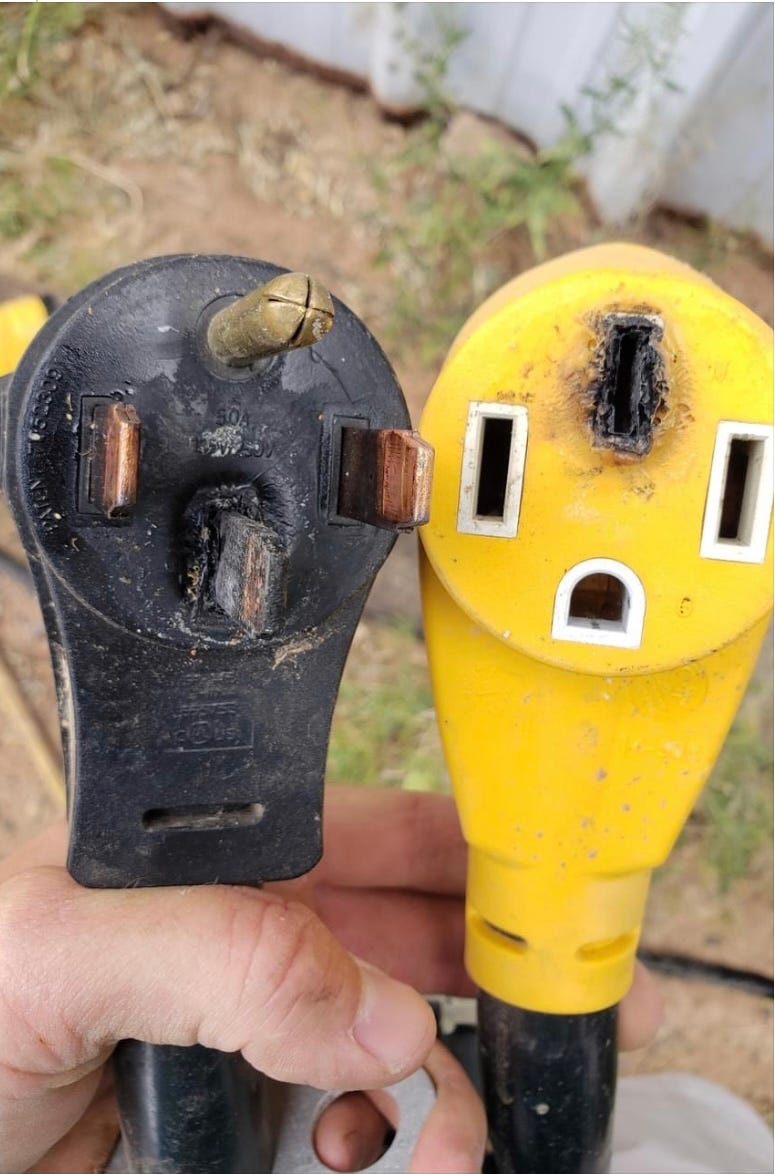
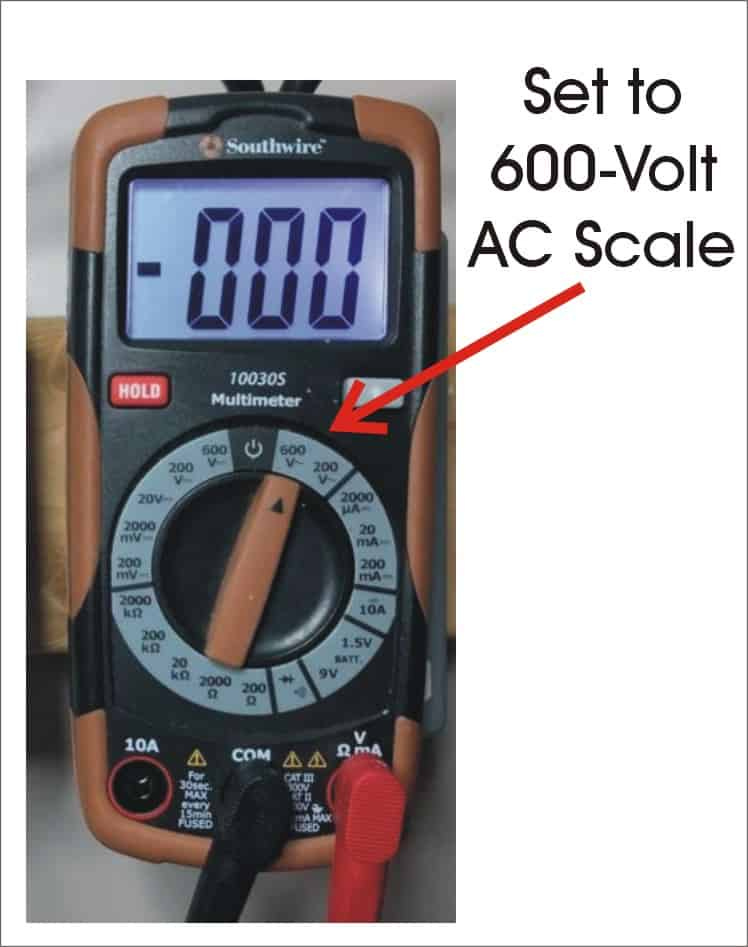
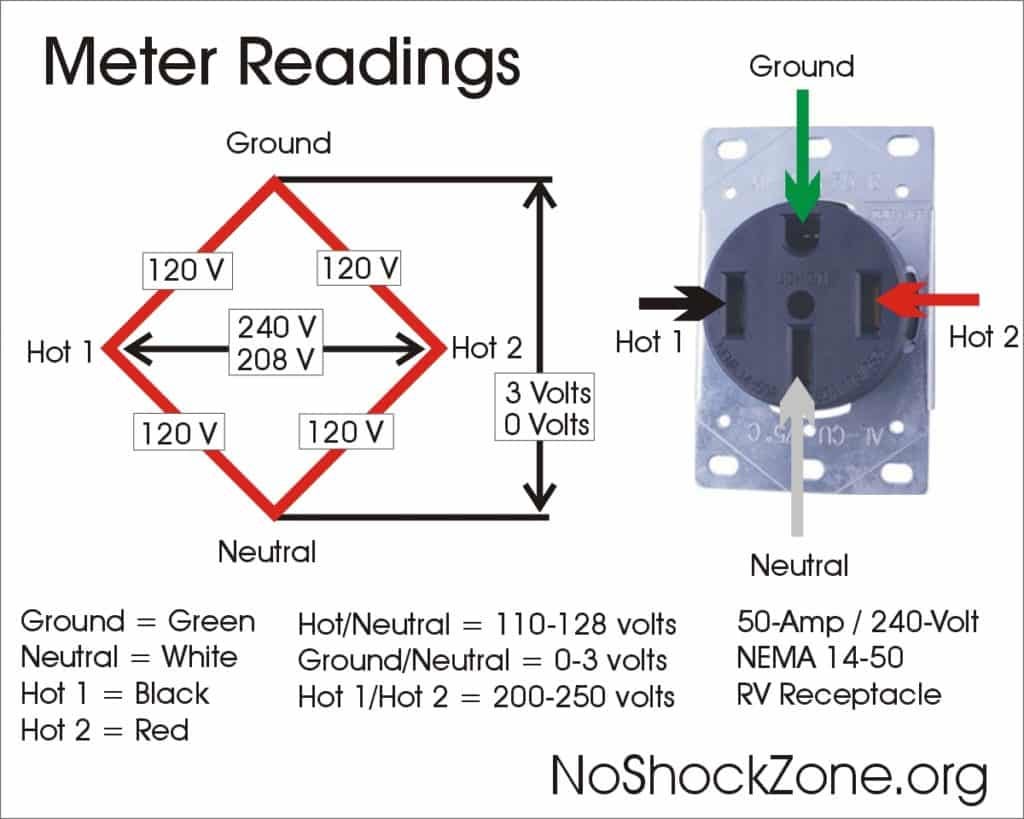


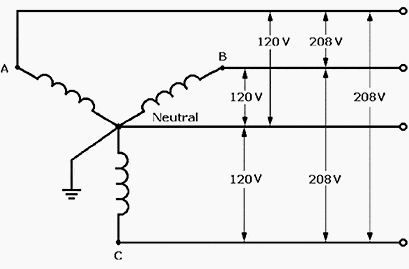


Mike, just an FYI on the no EMS units having overloaded neutral protection. In November 2014 I sent this question to Thomas E. Fanelli, President Progressive Industries, Inc. He acknowledged the problem and said he has been working on it. By February 2015 I had a prototype board installed in my EMS-LCHW50 for testing. Almost a year later I had a functioning prototype board in my EMS that would trap the overloaded neutral. Thomas told me that it was planned to be in a new product soon but I never heard another word about it. Too bad he didn't continue with the project.
Mike, as to e.g. L1=10a, L2=25a, N=15a, I agree IF you have linear loads that don’t produce harmonic loads. So in these types of nonlinear loads (like switch mode power supplies), the L1 and L2 currents don’t always cancel, and can be additive. As to how many loads in an RV are nonlinear, that is a variable. 🤔
In a network command center that I once designed (208v 3 phase), we never shared neutrals from phase to phase. Each phase had dedicated neutrals back to the power panel.